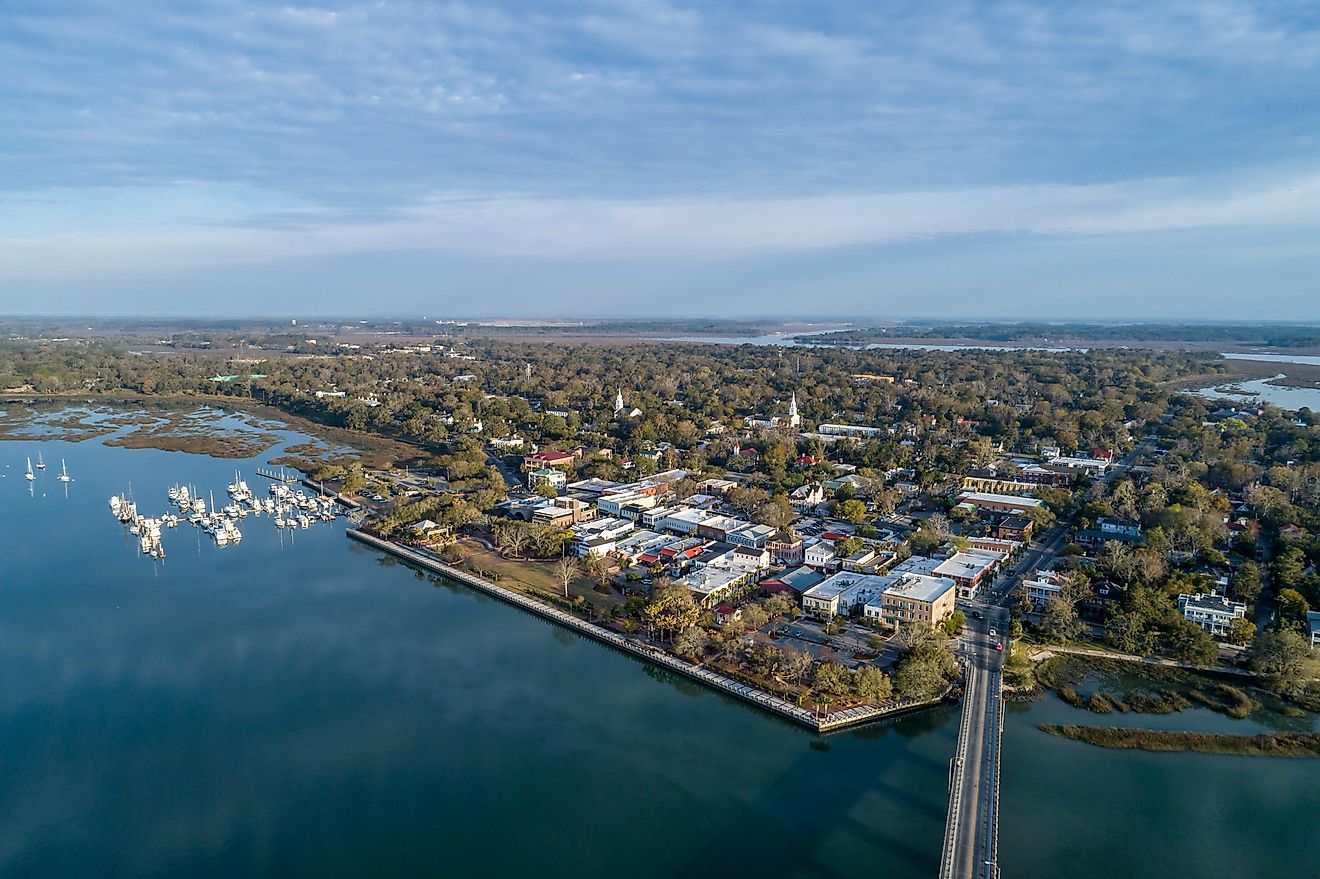
7 Snake Infested State Parks In Ohio
Ohio's state parks are known for their winding rivers, sandstone cliffs, shady forests, and steep gorges, but the Buckeye State is also home to a surprisingly large number of snakes. From the marshy lowlands of Lake Hope to the remote Appalachian slopes of Shawnee, every park provides the warm rocks, dense vegetation, and hiding spots that snakes favor.
While most of Ohio's snake species are harmless and vital to ecological balance and rodent control, the presence of rare and deadly snake species in some parks should promote a sense of caution in all outdoor experiences.
Hocking Hills State Park

Found in southeastern Ohio, Hocking Hills State Park features rugged gorges, steep cliffs, and forested hillsides, terrain that’s ideal for snakes. Here, the non-venomous gray (or black) rat snake, Ohio’s largest snake species at typically four to six feet long but sometimes over eight feet long, is common. Also present, though rarely encountered, is the venomous eastern timber rattlesnake, an endangered species that inhabits the dry, forested ridge terrain of this region.
One recent sighting captured a nearly six-foot rat snake slithering along the Gorge Trail. Visitors should stay on marked trails, watch carefully near rocks and logs, and wear long pants and boots if hiking through underbrush, especially due to the potential, albeit low, presence of rattlesnakes.
Lake Hope State Park
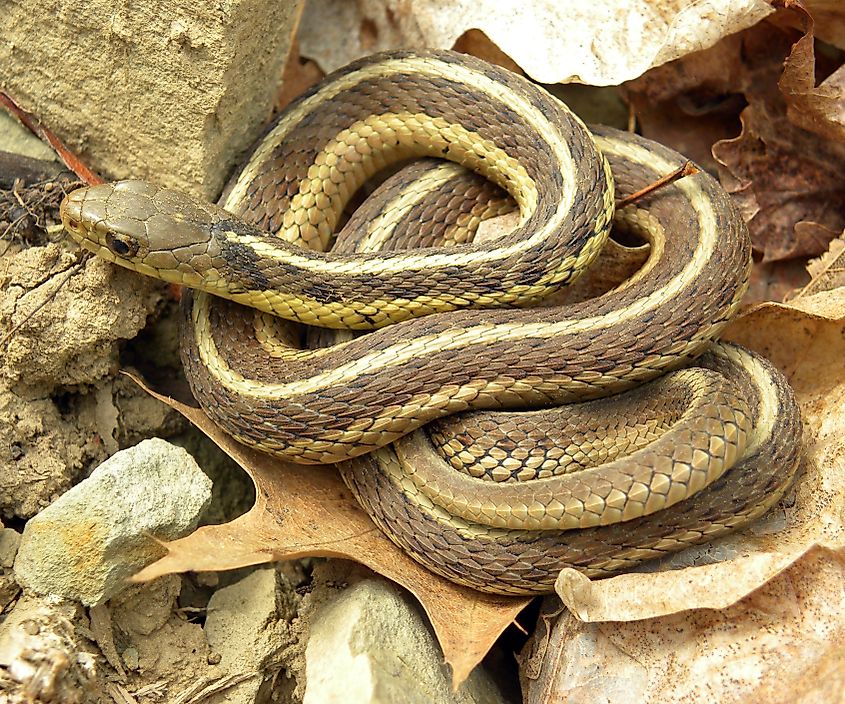
Nestled within the forested hills of southeastern Ohio’s Lake Hope State Park, part of the Zaleski State Forest, the marshes, shallow coves, and shoreline offer prime habitat for snakes. Visitors here commonly encounter the nonvenomous Northern Water Snake, which is abundant in lakes and slow-moving waters across Ohio. Also frequent are the nonvenomous Eastern Garter Snake, which prefers moist edge habitats near ponds and marshy woods.
While specific documentation within the park is limited, anecdotal reports suggest the presence of the venomous Eastern Copperhead in the surrounding forested terrain. Because snakes may bask under logs or rocks near water edges or tall grass, visitors should peel back cover carefully, avoid tall grass, and stick to cleared paths.
East Fork State Park
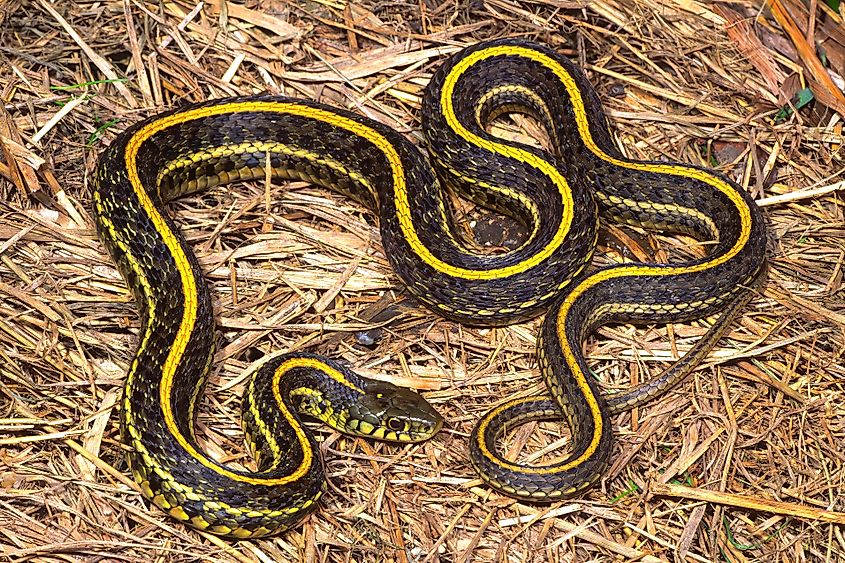
East Fork State Park in southwestern Ohio spans diverse habitats, dry wooded hills, marsh-grass floodplains, rocky slopes, and river valleys. Among the documented residents is the non-venomous Eastern Plains Garter Snake, a medium-sized garter snake that favors open grassy or marshy areas near water.
Although there are few thorough records of the park's venomous species, the diverse landscape undoubtedly provides adequate habitat for snakes in general. For safety while camping or hiking: store gear off the ground if possible, inspect your tent area before setting up, and keep sleeping bags zipped.
Shawnee State Park
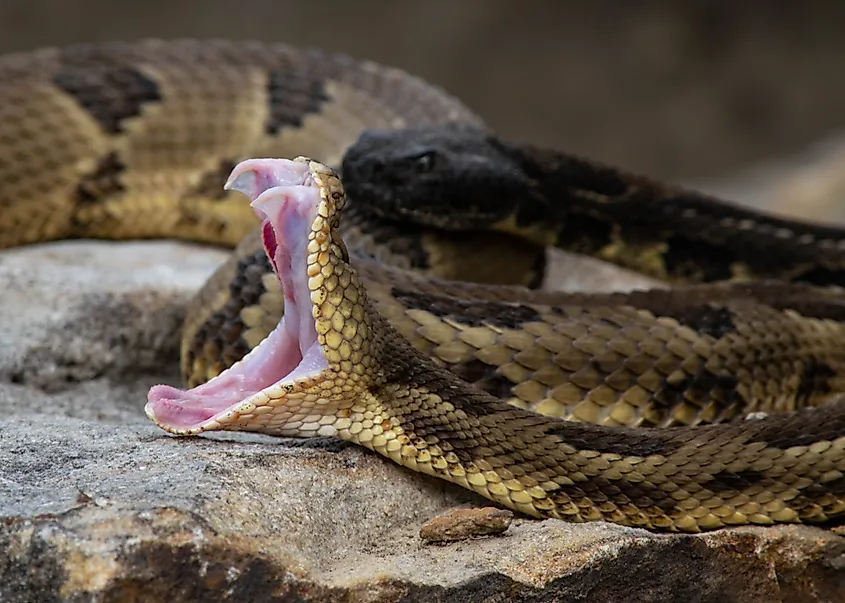
Seen from the rugged Appalachian foothills of southern Ohio, Shawnee State Park rests amid steep valleys and wooded ridges in Scioto County. The park is explicitly noted as home to the endangered Timber Rattlesnake, which persists in remote, dry-wooded hill country throughout Ohio.
While other snake species are less documented in the park, the very existence of the nature center and its reptile exhibits suggests a robust snake presence. On trails, especially those crossing ridges or rocky outcrops, hikers should watch their step and avoid placing hands or feet under ledges or logs without checking.
Salt Fork State Park

At Salt Fork State Park, Ohio’s largest state park by land, with over 17,000 acres of terrain and nearly 3,000 acres of lake, you’ll find a richly snake-friendly landscape of winding shallows, shallow coves, and sun-warmed shoreline.
The lake is repeatedly listed among Ohio’s “most snake-filled” aquatic systems: non-venomous species like the northern water snake dominate rip-rap and dock edges, while ring-necked snakes and black racers patrol dry wood-meadow zones nearby. The park also hosts a children’s program titled “Snakes Alive!!!” underlining the very real profile of snakes here.
Mohican State Park
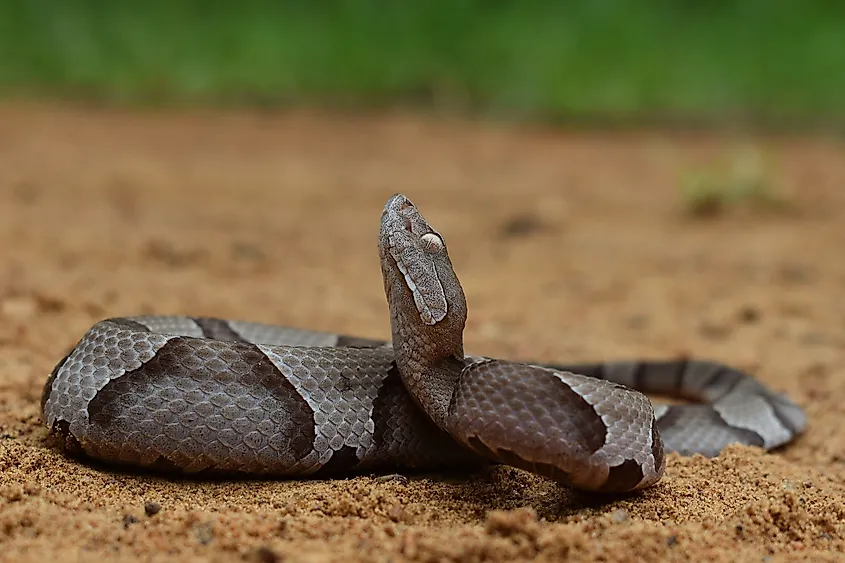
Mohican State Park in north-central Ohio, which is within close proximity to the vast Mohican-Memorial State Forest, features steep forested slopes, hemlock-lined river gorges, and mixed hardwood terrain that supports a diverse reptile community. The park is home to the non-venomous Black Rat Snake, one of Ohio’s largest snakes, known for climbing trees, raiding rodent nests, and inhabiting mature forest canopies.
Mohican also lies within the documented range of the Eastern Copperhead, the state’s most commonly encountered venomous snake, which favors rocky, south-facing slopes and warm forest openings like those found throughout the Mohican Gorge region. The park’s nature center and annual wildlife programs regularly highlight these snakes, demonstrating their prominence in the area’s ecosystem.
Paint Creek State Park
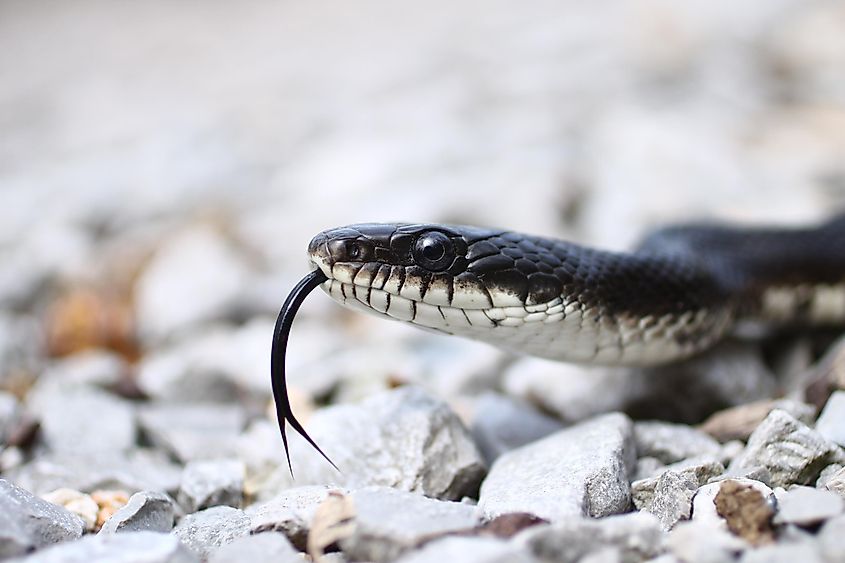
In the rolling terrain of Ohio’s Appalachian Plateau region, Paint Creek State Park features woods, streams, and a large reservoir, creating an undoubtedly snake-friendly environment.
The park even includes Rattlesnake Creek, a tributary flowing into Paint Creek Lake, offering a hint of the region’s herpetological past. While specific recent records of venomous snakes in the park are scarce, the varied habitats, bluffs, creek beds, and lakeside woods are highly suitable for both common snakes like the black rat snake and water-edge species.
Exploring Ohio Safely
Avoiding unexpected encounters can be minimized by being prepared, which includes staying on marked paths, paying close attention to where you are walking, wearing appropriate footwear, and using caution when reaching into underbrush or along the water.
On the other hand, getting to see snakes in their natural habitats can be an exciting way to discover more about Ohio's fauna and the significant role that these reptiles play in the ecosystem. Knowing which parks are "snake hotspots" will help you enjoy Ohio's natural beauty while being safe, whether you're a hiker, camper, or wildlife enthusiast.

